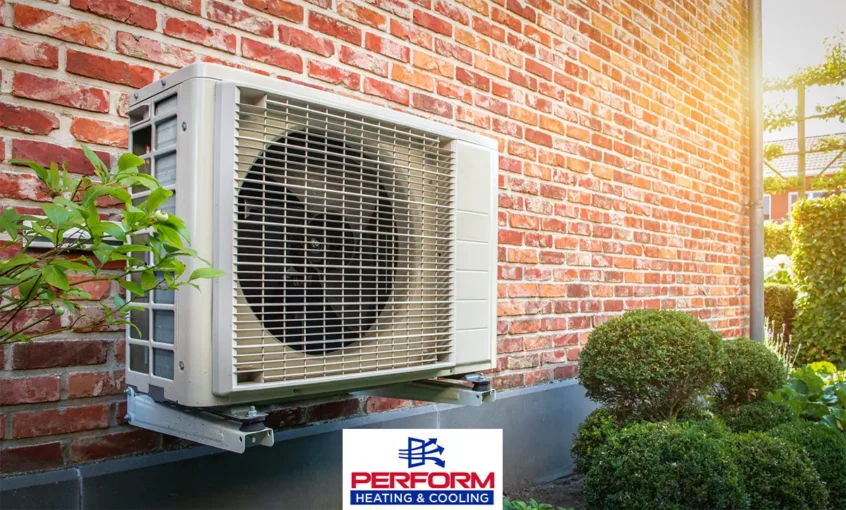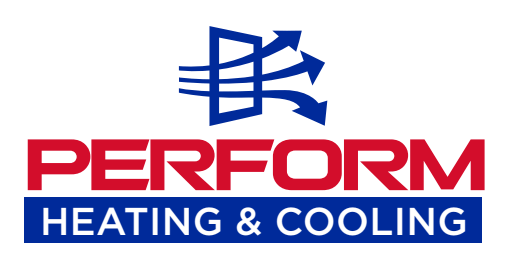Call (801) 243-0191
Advantages of Heat Pumps in Utah

When it comes to heating and cooling your home, there are many options to choose from. One of the most innovative and energy-efficient options available today is the heat pump. Heat pumps work by extracting heat from the air or ground and transferring it indoors to heat your home. They can also reverse the process to provide cool air during the summer months. If you’re a homeowner with a furnace that is over 15 years old, you may want to consider upgrading to a heat pump for the following advantages:
- Energy Efficiency: Heat pumps are highly energy-efficient compared to traditional furnaces. They use electricity to transfer heat rather than generate it, resulting in significant energy savings.
- Year-round Comfort: Unlike furnaces that only provide heating, heat pumps offer both heating and cooling capabilities. This means you can enjoy consistent comfort throughout the year, no matter the season.
- Lower Carbon Footprint: Heat pumps are known for their low environmental impact. Since they rely on renewable energy sources, such as air or ground temperature, they produce fewer greenhouse gas emissions compared to fossil fuel-based furnaces.
- No Need for Gas Lines: If your current furnace runs on natural gas or oil, you may have to deal with the hassle and cost of installing or maintaining gas lines. Heat pumps use electricity and eliminate the need for additional fuel sources.
- Improved Air Quality: Heat pumps come with built-in air filtration systems that help remove dust, allergens, and other pollutants from the air. This can greatly improve the indoor air quality in your home, making it healthier and more comfortable for you and your family.
Heat pump installation process
Now that you’re aware of the advantages of heat pumps, let’s take a closer look at the installation process. Installing a heat pump requires professional expertise, so it’s essential to hire a qualified HVAC technician to ensure a seamless installation. Here’s a step-by-step guide to give you an idea of the process involved:
- Assessment and Sizing: The first step is to assess your home’s heating and cooling needs. An HVAC technician will evaluate factors such as the size of your home, insulation levels, and the climate in your area to determine the appropriate size and capacity of the heat pump.
- Removal of Old System: If you have an existing furnace, it will need to be removed before the heat pump installation can begin. The technician will disconnect and safely dispose of the old system.
- Installation of Indoor Unit: The indoor unit of the heat pump, which includes the evaporator coil and air handler, will be installed in a central location in your home, typically the basement or utility room. This unit is responsible for circulating the conditioned air throughout your home.
- Installation of Outdoor Unit: The outdoor unit houses the compressor and condenser coil. It’s usually placed outside, either on the ground or mounted on a wall. The technician will ensure the outdoor unit is securely installed and properly connected to the indoor unit.
- Connection to Ductwork: If you already have an existing ductwork system, the heat pump will be connected to it for air distribution. The technician will inspect the ductwork for any leaks or damages and make the necessary repairs or modifications if needed.
- Electrical Wiring: Proper electrical wiring is crucial for the safe and efficient operation of a heat pump. The technician will carefully wire the heat pump system, ensuring all connections are secure and in compliance with local electrical codes.
- Refrigerant Charge and Testing: Once the installation is complete, the technician will charge the heat pump with the appropriate refrigerant and test the system to ensure it’s functioning correctly. They will also make any necessary adjustments to ensure optimal performance.
It’s important to note that each installation may vary depending on the specific requirements of your home. A professional HVAC technician will assess your unique needs and provide a tailored installation plan.
Heat pump benefits
Now that you understand the installation process, let’s delve deeper into the benefits of heat pumps for homeowners with outdated furnaces:
1. Cost Savings: Heat pumps can lead to significant cost savings over time. Due to their energy efficiency, they consume less electricity, resulting in lower utility bills. Additionally, some homeowners may be eligible for rebates, incentives, or tax credits for upgrading to a more energy-efficient heating and cooling system.
2. Increased Comfort: Heat pumps provide consistent and even heating throughout your home. Unlike traditional furnaces that can create hot and cold spots, heat pumps maintain a more balanced temperature, ensuring every room is comfortable.
3. Enhanced Control and Programmability: Many heat pumps come with advanced control options, allowing you to easily adjust temperature settings and program schedules according to your preferences. This level of control ensures optimal comfort and energy savings.
4. Quiet Operation: Heat pumps operate with minimal noise compared to traditional furnaces. This makes them ideal for homeowners who value a quiet and peaceful indoor environment.
5. Longevity and Durability: Heat pumps are built to last and typically have a longer lifespan than traditional furnaces. With regular maintenance and care, a heat pump can serve you well for many years.
6. Reduced Carbon Footprint: By choosing a heat pump, you’re actively contributing to a greener future. Heat pumps produce fewer greenhouse gas emissions compared to fossil fuel-based heating systems, helping to combat climate change.
Heat pump technology
Heat pumps utilize advanced technology to provide efficient heating and cooling for your home. Here are some key components that make up a heat pump system:
- Compressor: The compressor is the heart of the heat pump system. It circulates the refrigerant through the system and compresses it to increase its temperature.
- Evaporator Coil: The evaporator coil absorbs heat from the surrounding air or ground and evaporates the refrigerant to a gas state.
- Condenser Coil: The condenser coil releases heat as the refrigerant condenses back into a liquid state. This process generates the heating or cooling effect.
- Expansion Valve: The expansion valve regulates the flow of refrigerant and controls its pressure. It allows the refrigerant to expand before entering the evaporator coil.
- Refrigerant: Refrigerants are chemicals that are essential for the heat transfer process within a heat pump system. Common refrigerants used in heat pumps include R-410A and R-32, which are environmentally friendly alternatives to older refrigerants.
- Smart Thermostat: Many heat pump systems come with smart thermostats that provide advanced control features. These thermostats allow you to program temperature settings, control the system remotely, and monitor energy usage for increased efficiency.
Cost-effective home cooling
One of the significant advantages of heat pumps is their ability to provide cost-effective home cooling during the hot summer months. When the temperature rises, heat pumps can reverse their operation and act as air conditioners. Here’s why heat pumps are a smart choice for home cooling:
1. Energy Efficiency: Heat pumps are known for their energy efficiency, and this extends to their cooling capabilities. By transferring heat from indoors to outdoors, heat pumps can cool your home using less energy compared to traditional air conditioning systems.
2. Lower Operating Costs: Due to their high energy efficiency, heat pumps consume less electricity while providing the same level of cooling comfort. This results in lower cooling costs and can lead to substantial savings over time.
3. Dual-purpose System: With a heat pump, you don’t need a separate air conditioning system. Heat pumps offer both heating and cooling capabilities in a single unit, providing year-round comfort and eliminating the need for additional equipment.
4. Consistent Performance: Heat pumps deliver consistent cooling performance throughout your home. Unlike window units or portable air conditioners that may struggle to cool certain areas, a heat pump can maintain a balanced and comfortable indoor environment.
5. Environmentally Friendly: By using heat pump technology for cooling, you can reduce your carbon footprint. Heat pumps consume less energy and produce fewer greenhouse gas emissions compared to traditional air conditioning systems, making them a sustainable choice for home cooling.
Energy-efficient heating
Energy-efficient heating is a key aspect of heat pumps and can significantly benefit homeowners with outdated furnaces. Let’s explore why heat pumps are an ideal choice for efficient home heating:
1. Heat Transfer Process: Unlike traditional furnaces that burn fuel to generate heat, heat pumps transfer heat from the air or ground into your home. This process consumes less energy and is highly efficient, resulting in heating savings.
2. Improved Performance in Mild Climates: Heat pumps excel in mild to moderate climates, as they can extract heat even when outdoor temperatures are relatively low. They can efficiently heat your home without relying solely on electric resistance heating, which can be expensive.
3. Zoned Heating: Heat pumps offer the option to create multiple zones in your home, allowing you to customize heating according to specific areas or rooms. This zoning capability ensures optimal comfort and energy efficiency by only heating the occupied spaces.
4. Supplemental Heat: In extremely cold climates or during exceptionally low outdoor temperatures, heat pumps may require supplemental heat. This can be in the form of electric resistance heating or a backup furnace. However, the need for supplemental heat is minimal, and the majority of the heating is still performed by the heat pump, maximizing energy efficiency.
5. Improved Indoor Air Quality: Heat pumps come with built-in air filtration systems that help remove dust, allergens, and other pollutants from the air. This can greatly improve the indoor air quality, ensuring a healthier and more comfortable living environment.
Conclusion
Upgrading from an outdated furnace to a high-efficiency heat pump can revolutionize your home heating and cooling experience. Heat pumps offer numerous advantages, including energy efficiency, cost savings, consistent comfort, improved air quality, and reduced environmental impact. With their advanced technology and dual-purpose functionality, heat pumps are an all-in-one solution for year-round home comfort. If you’re a homeowner with a furnace that is over 15 years old, it’s worth considering the benefits and possibilities that heat pumps can bring to your home.
Make sure to consult with a reputable HVAC professional like Perform Heating and Cooling in Utah to assess your specific needs and guide you through the heat pump installation process. With the right heat pump system in place, you’ll enjoy a comfortable and energy-efficient home for years to come.
